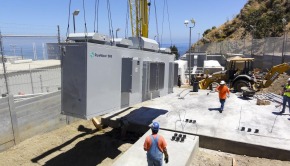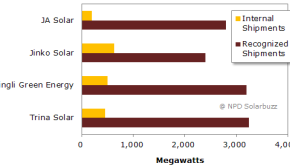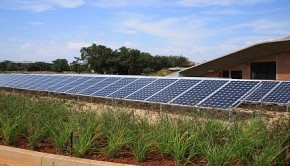Global Wind Energy Market Rebounding, Set For “Unspectacular Growth”
November 5th, 2014 by Joshua S Hill
The Global Wind Energy Council recently launched its annual Global Wind Report, predicting at least 47 GW of wind energy installations for 2014, and a return to “steady if unspectacular” growth over the next few years.
“The global market is back on track for 2014,” said Steve Sawyer, GWEC Secretary General. “A strong Chinese market, recovery in the US and an increasing role for emerging economies in the global market means that after 2014 the market will resume its steady if unspectacular growth, and end up just about doubling total global installations during the five-year period to 2018.”
The Global Wind Energy Council (GWEC) predict China will lead the market, and the US will see strong recovery over 2014. Record installations in Canada and Brazil will join South Africa’s recent involvement as a global renewable energy leader,
All in all, these latest figures are nothing new, but do add to the growing importance of the wind energy industry as an important player in future discussions.
“Wind is now a mainstream technology, and a central part of electricity market development in an increasing number of countries,” continued Sawyer. “But for the industry to reach its full potential, it is essential that governments get serious about climate change, and soon.”
There are several region-specific highlights worth making. As has already been covered, India’s wind energy capacity is set to double in five years thanks to effective policies already in place.
The report looked at three specific scenarios — the new policies scenario, the moderate scenario, and the advanced scenario. As seen below, China is a leader across the board, but there are some interesting mix-ups throughout the rest of the world, especially if you keep your eyes on OECD Europe and OECD North America.
New Policies
Moderate
Advanced
The full report is available for download here (PDF), for all 60 pages of wind energy goodness.
Keep up to date with all the hottest cleantech news by subscribing to our (free) cleantech newsletter, or keep an eye on sector-specific news by getting our (also free) solar energy newsletter, electric vehicle newsletter, or wind energy newsletter.
-
http://fractalicious.ca/ Adam Grant
-
http://www.michaeljberndtson.com/ Michael Berndtson
-
http://fractalicious.ca/ Adam Grant
-
http://www.michaeljberndtson.com/ Michael Berndtson
-
-
-
Larmion
-
Bob_Wallace
-
-






























